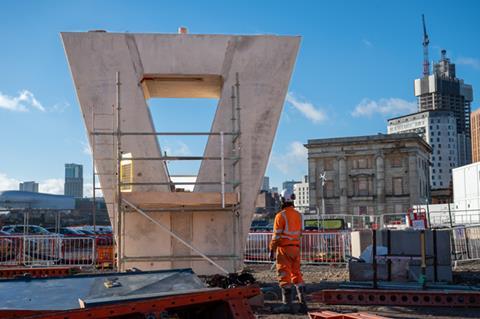Training body says construction needs thousands of extra staff to meet output growth especially in housing and infrastructure
The construction industry needs an extra 250,000 workers over the next five years in order to keep up with demand, the CITB has said.
In its latest annual update, the training body said predicted output levels between now and 2028 meant 251,500 workers – the equivalent of an additional 50,000 a year – were needed to cope with hotspots such as private housing, infrastructure and repair and maintenance.
While other regions are predicted to have stronger output growth, the South-west is set to be the area with the biggest need for workers – with CITB saying an extra 42,800 workers will be required by 2028.

Hinkley Point C will still need resource, it said, but other schemes such as the planned Tata car battery factory in Somerset will also soak up labour.
The West Midlands will also need more than 35,000 workers by 2028 with work on the HS2 stations at Curzon Street and Interchange cited as factors as well as Lendlease’s Smithfield regeneration project in Birmingham.
Other areas with high demand include Yorkshire and Humber requiring an 26,600 workers, Greater London needing 26,250 more workers and Scotland after an extra 26,100 workers.
The CITB said an average of 38,000 vacancies were advertised every month last year with the 200,000 brought into the industry still not enough to plug the shortfall.
It added more than 210,000 workers left the sector last year with employers reporting that finding skilled staff was their biggest challenge as older – and more skilled – workers retire.
The CITB said it expects output to tick up by an average 2.4% a year over the next five years and the group’s chief executive Tim Balcon added: “The UK construction industry will continue to grow but needs more people in the workforce with the right skills. There has always been a demand for workers, and [our report] drives home how many are leaving the sector compared to those joining.”
CITB said it will plough £267m into helping the industry improve diversity, quality and productivity as well as making construction a more attractive career choice.
It said its initiatives included helping employers access grants and find suitable training as well working with employers to find area-specific skills requirements.

CITB said the current number of people working in the construction industry was 2.67 million. If projected growth is met, the number working in the sector will rise 3% to 2.75 million by 2028.
The biggest group of workers by then will be non-construction professional and technical office based staff with a figure of 289,240 followed by directors, executives and seniors managers which will account for 277,000 staff.
Remaining among the biggest trades by 2028 will be carpenters and joiners, electricians and steel erectors.
London and the South-east had the biggest share of output last year with 34% followed by the North-west with 10.1% and East of England at 9.8%.
Projected average annual output across the North-west between now and 2028 is set to be 2.2% – below the 2.4% average – but it will be above the average for London, the South-east and East of England, the CITB said.























No comments yet